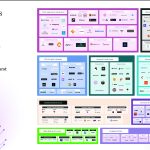
Alicia Estey on Bridging Education and Conservation in Gorongosa National Park
Alicia Estey, who served as chief financial and operating officer at Boise State University, led international educational initiatives alongside her financial responsibilities.
Estey recently announced a transition to Vice President for Finance and Administration at the University of Vermont, but her work on the partnership has been crucial to its success and expansion.
“We have a project in Mozambique that I’ve been working on for the past five years, and it was one of the most rewarding aspects of the work I did at Boise State,” she says.
Deep in rural Mozambique, the partnership between the university and Gorongosa National Park tackles the twin challenges of conservation and education. This collaboration, which focuses on preschool education in communities surrounding the park, represents an important extension of university outreach into international development.
The program serves rural communities in one of the world’s poorest countries. Gorongosa’s preschool initiative, launched in April 2022 with more than 210 children between the ages of 4 and 5 years old from the communities of Nhambita and Vinho.
Alicia Estey Talks The Conservation-Education Connection
Initially rooted in scientific research by faculty and graduate students, Boise State University’s partnership with Gorongosa evolved to embrace education as a key tool for advancing conservation and improving lives.
“An Idaho philanthropist has invested millions into restoring the national park,” Estey explains. “It was battered for years during a war in Mozambique. The park had a significant animal population that declined significantly during the war.”
The park’s initial focus on wildlife restoration created unexpected challenges. “When you reintroduce an animal population in a park that has few boundaries, human-wildlife conflict can result” Alicia Estey notes. Environmental pressures pushed the initiative to adopt a more inclusive strategy, combining conservation efforts with community development. Education became central to this work, emphasizing improving opportunities for young women.
Girls in Mozambique face significant barriers to education. “Though they have high first-year enrollment rates, more than 50 percent drop out by fifth grade ” Estey says. “This is, of course, a significant concern,” she says.
Alicia Estey continues, “Boise State saw an opportunity to help support the park’s preschool programs by supporting teaching and learning. We provide professional development for those leading the programs as well as supplies for the students.” Estey says “We have seen an immediate and lasting impact from our work in Mozambique, which is very rewarding.
Expanding Educational Impact Beyond Preschool
The Gorongosa preschool program employs around 30 facilitators trained in child development fundamentals. These teachers introduce children to language, literacy, mathematics, the arts, and creativity, building foundational skills that prepare them for primary education.
Boise State University, in partnership with the Boise School District, contributes targeted materials to support these efforts, including stencil kits, learning tools, doll-making supplies, laminators, bookbinding machines, and markers for teachers. For children, the program provides crayons, Portuguese-language books, clothing, and shoes.
The Gorongosa work provided a meaningful balance to Alicia Estey’s demanding campus responsibilities at Boise State. She says, “We travel to the park once a year for a couple of weeks, and then provide support over the course of the year. This is something I really looked forward to, and it really filled my cup, so to speak, because the work that I do is often challenging, particularly intense over the past five years. I am very grateful to have had this opportunity”
The program continues to expand, with plans to extend beyond the initial communities of Nhambita and Vinho to reach Nhamatanda, Dondo, Cheringoma, Muanza, and Marínguè — all communities located within the Park’s Sustainable Development Zone.












